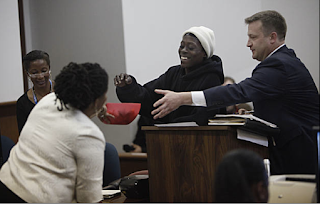This week, Madrid v. Gomez, a massive class-action lawsuit on behalf of Pelican Bay inmates filed in 1995, came to an end. KQED reports:
In a sweeping decision with national implications, U.S. District Court Judge Thelton Henderson of San Francisco ruled in 1995 that Pelican Bay inmates had been subjected to excessive violence and cruel and unusual punishment. That followed harrowing courtroom testimony of prison staff routinely beating, burning and even shooting inmates and getting away with it. Mentally ill inmates were locked away in isolation units with almost no contact with doctors or other staff.
The trial also included evidence that Pelican Bay guards had staged an inmate riot while Henderson was visiting the facility.
Federal prosecutors alleged the guards were trying “to show Judge Henderson that Pelican Bay is a dangerous place, and that he should not interfere with the guards in running the prison.” Henderson ordered the prison to remove any seriously mentally ill or retarded inmates from the security housing unit. He also appointed a federal monitor to oversee changes in the way California deploys force in prison and how it investigates and disciplines prison staff.
Henderson ended the case with a final three-page written order after the California Department of Corrections and Rehabilitation pledged to keep the reforms even without court supervision. His order was made public Monday.
“The Court is proud of the work done during Advertisement the life of this case. Pelican Bay was once a place where prison officials used force ‘for the very purpose of inflicting punishment and pain,'” Henderson wrote, quoting from previous findings in the case.
The judge said he is concerned the department could revert to its previous unconstitutional practices but said he is satisfied that attorneys representing inmates will sue again if the department regresses.
And CDCR expands on the measures taken:
“CDCR has complied with the Madrid mandates and successfully created a model internal affairs investigation and employee disciplinary process. Investigations are consistent, thorough, fair and transparent. The Madrid mandates also provided oversight of employee investigations by the formation of the Bureau of Independent Review in 2004, part of the Office of the Inspector General (OIG). In its last report, the OIG noted that CDCR has substantially complied with the policies and procedures mandated by the Madrid court,” Cate said.
As Michael Montgomery says in the recorded portion, the broad issue of SHU and isolation practices remains unanswered.
On a day in which I was shocked and appalled to read about SCOTUS’ rejection of Troy Davis’s appeal, this was a bit of welcome news.






